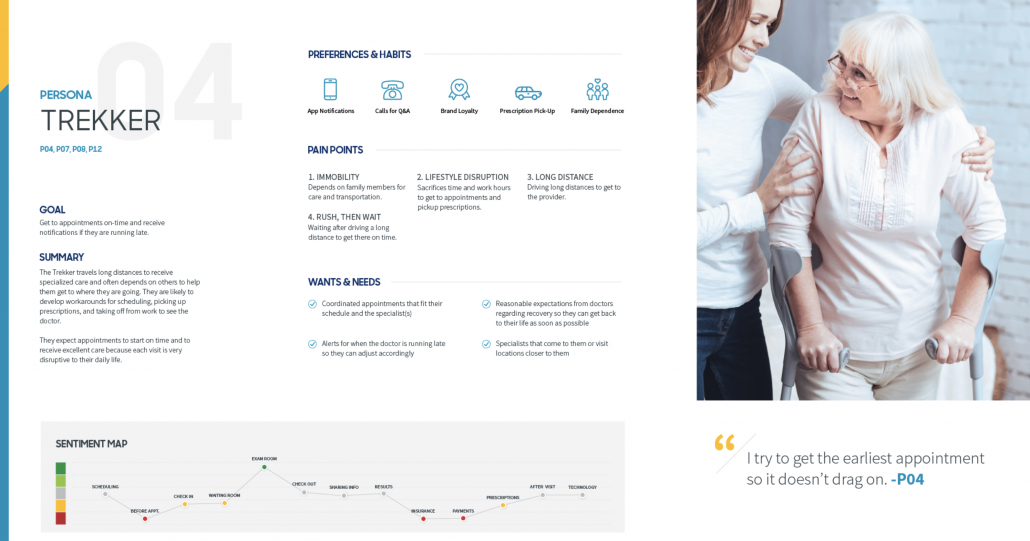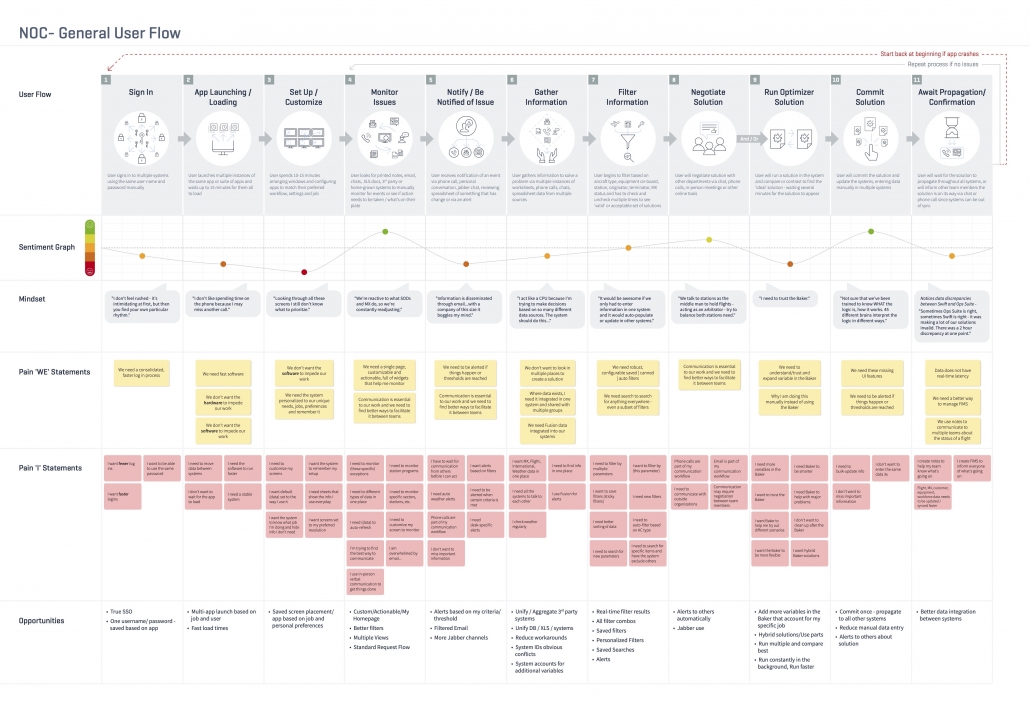Analysis & Synthesis
Once I have collected the data I need to synthesize it to reveal patterns, discover emerging themes, consolidate pain points and find the actual scope and context of the data.
Activities
- User Shrines
- Affinity Diagramming
- Behavioral-based Persona Development
- Current-state Journey Maps/Workflow Diagrams
User Shrines
Immediately after every contextual inquiry or interview, I sketch out the wants, needs, pains, habits, demographics and quotes from the participant. These shrines help everyone on the prject remember who said or did what, while we were conducting our affinity diagramming exercise. User shrines will also help us consolidate participants into true user personas.
Affinity Diagramming
We’ll organize a large number of ideas, findings, and issues generated during data gathering into logical groups or themes, enabling the team to identify patterns, prioritize issues, and generate insights.
I compile all of the quotes, observed processes, opportunities and pain points from all contextual inquiries into single line items that are printed (or digitized) on individual ‘cards.’
Then, with the project team, I will group them into similar ‘I’ statements, like “I need this software to tell me what documents I’ll need before I start my order.”
Then we’ll group similar ’I’ statements in to ‘We’ statements, like “We need the system to help us understand what and why they need this info from me.”
Along the way we will note opportunities for each affinity.
Behavioral-based Persona Development
Contextual Inquiry and Affinity diagramming leads into the development of Personas. These are not ‘made up’ marketing personas business owners assume exist, they are based strictly on the observed behavior of an affinity of users. Users from contextual inquiries are grouped based on similar affinities, goals, pains and opportunities through a process called Spectra Mapping. Often, clients will say, “We need six personas,” but in reality, we don’t know how many we will end up with until we have analyzed the data. You may only get three — it all depends on the data collected.
These personas will actively inform the design of the new system and can be referred back to at any time during the life cycle of the product. Teams can look at a feature and ensure each persona can use it efficiently.
Current-state Journey Maps/Workflow Diagrams
In order to foster a shared empathic understanding of the users’ interactions with the application, product, or service over time and space we can build a consolidated map that shows the everything in the experience in one document.
Current journeys are built from contextual inquiry, diary studies and personas and illustrate user goals over time and space. They will inform the business where pain points and opportunities exist and how to best invest time and resources in the features that will aid the user throughout their experience with the product.











